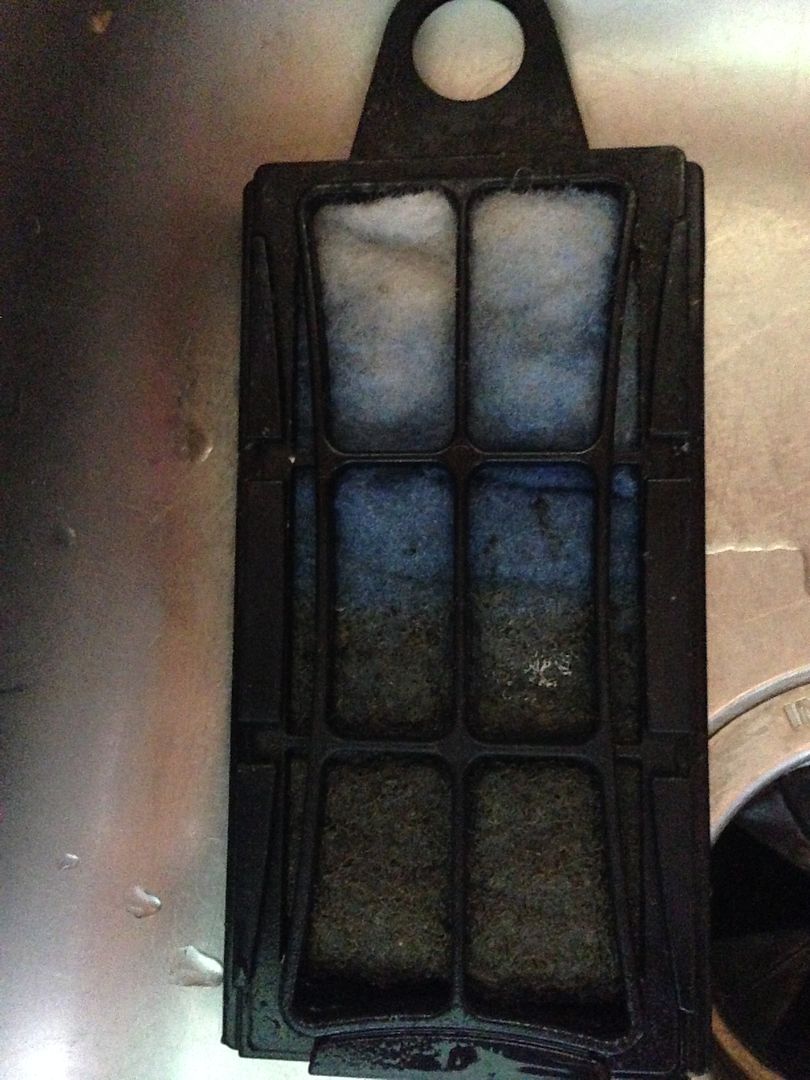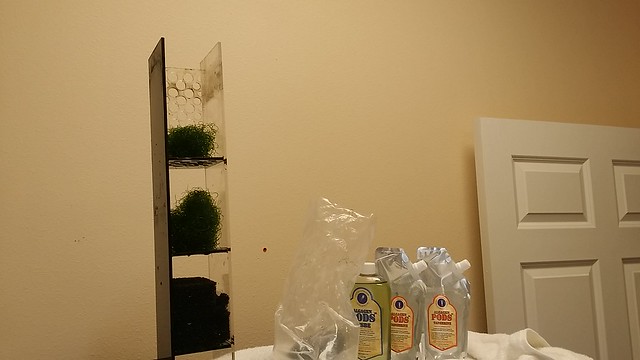deputydog95
Member
My tank has been up for quite some time now. And it's been running great. Not a stitch of hair algae or otherwise. I rarely clean the glass and when I do it's usually just to get rid of the coraline.
I run the large black sponge on pump 1 as my mechanical filtration. Pump 2 sponge was ditched a long time ago when I used that compartment for chiller pump return and ATO sensors.
I had thought about running no mechanical other than the skimmer, but I saw how much garage that sponge collects.
Up until recently I had been rinsing the sponge under a faucet till I "thought" it was clean. The LFS had suggested rinsing it in salt water but I can't see the benefit of maintaining a nitrate factory in a coral tank.
Fast forward, I now have a gold diatom outbreak as well as hair algae. Bulbs are relatively new. I do 10% water changes every week. Run chemi pure. In other words, I keep a tight regimen.
I don't know why I never thought of doing this before, but I recently put the sponge in a bucket with fresh water and rinsed it. The water turned black. It took 6 more fill and dumps before nothing came out of the sponge again.
I'm guessing I've only been partially cleaning the sponge this whole time by running it under a faucet. Now I'm following this sponge cleaning regimen weekly and I'm beating back the algae bloom. And it's only taking 2-3 fill and dumps to get the sponge clean now.
I had considered running a disposable poly filter instead, but the sponge is economical and will likely let small critters through whereas the polyfilter won't.
Anyway, just thought I would pass my experience along related to cleaning the sponge.
I run the large black sponge on pump 1 as my mechanical filtration. Pump 2 sponge was ditched a long time ago when I used that compartment for chiller pump return and ATO sensors.
I had thought about running no mechanical other than the skimmer, but I saw how much garage that sponge collects.
Up until recently I had been rinsing the sponge under a faucet till I "thought" it was clean. The LFS had suggested rinsing it in salt water but I can't see the benefit of maintaining a nitrate factory in a coral tank.
Fast forward, I now have a gold diatom outbreak as well as hair algae. Bulbs are relatively new. I do 10% water changes every week. Run chemi pure. In other words, I keep a tight regimen.
I don't know why I never thought of doing this before, but I recently put the sponge in a bucket with fresh water and rinsed it. The water turned black. It took 6 more fill and dumps before nothing came out of the sponge again.
I'm guessing I've only been partially cleaning the sponge this whole time by running it under a faucet. Now I'm following this sponge cleaning regimen weekly and I'm beating back the algae bloom. And it's only taking 2-3 fill and dumps to get the sponge clean now.
I had considered running a disposable poly filter instead, but the sponge is economical and will likely let small critters through whereas the polyfilter won't.
Anyway, just thought I would pass my experience along related to cleaning the sponge.




